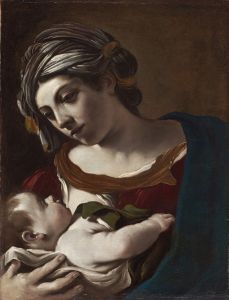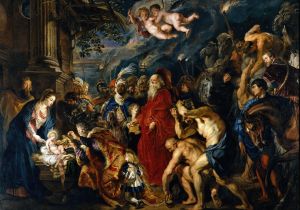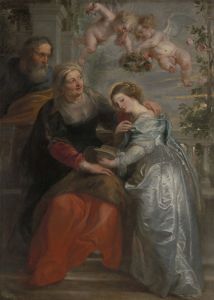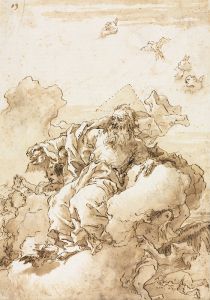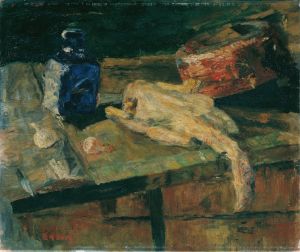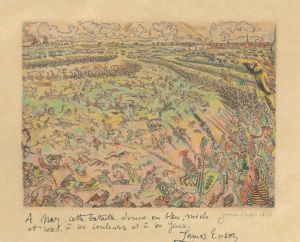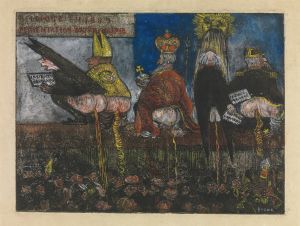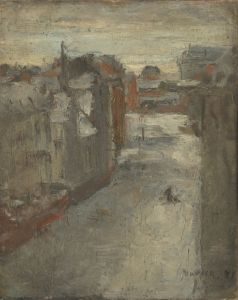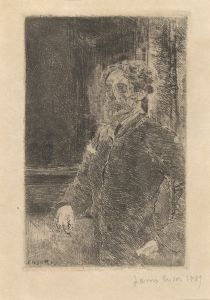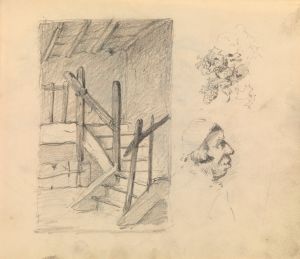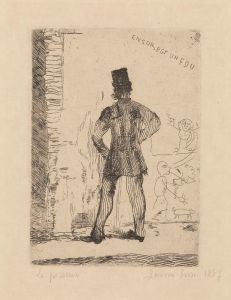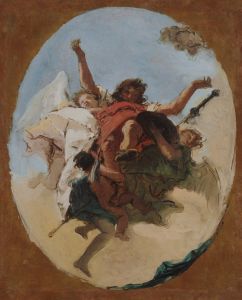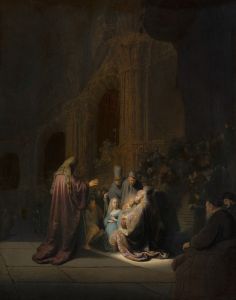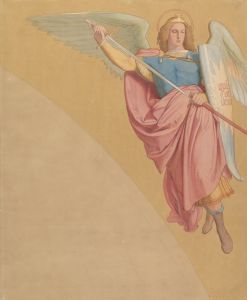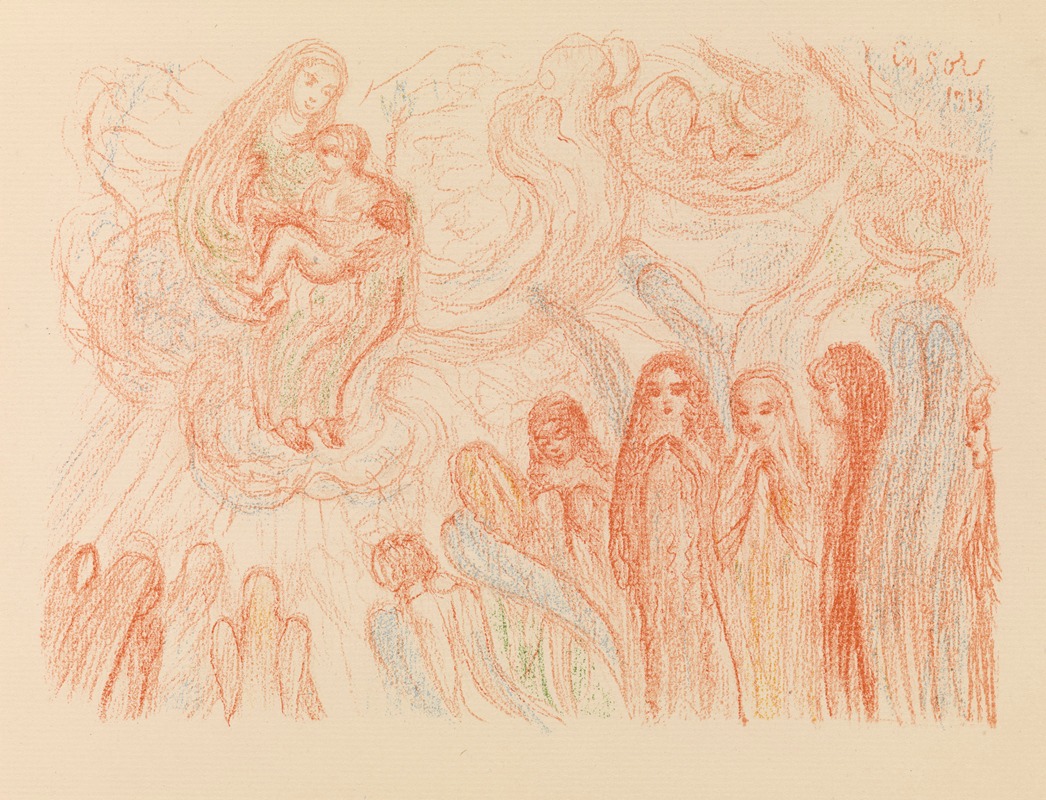
The Angels Worship Mary
A hand-painted replica of James Ensor’s masterpiece The Angels Worship Mary, meticulously crafted by professional artists to capture the true essence of the original. Each piece is created with museum-quality canvas and rare mineral pigments, carefully painted by experienced artists with delicate brushstrokes and rich, layered colors to perfectly recreate the texture of the original artwork. Unlike machine-printed reproductions, this hand-painted version brings the painting to life, infused with the artist’s emotions and skill in every stroke. Whether for personal collection or home decoration, it instantly elevates the artistic atmosphere of any space.
James Ensor, a prominent Belgian painter and printmaker, is known for his unique and often provocative works that blend elements of symbolism and expressionism. One of his notable paintings is "The Angels Worship Mary," which exemplifies his distinctive style and thematic interests. Ensor was born in 1860 in Ostend, Belgium, and spent most of his life there, drawing inspiration from the coastal environment and the vibrant cultural milieu of the late 19th and early 20th centuries.
"The Angels Worship Mary" is a testament to Ensor's fascination with religious themes, a common motif in his oeuvre. His works frequently explore the intersection of the sacred and the profane, often with a satirical edge. In this painting, Ensor presents a scene of celestial adoration, with angels gathered around the figure of Mary. The composition reflects his interest in religious iconography, yet it is imbued with his characteristic sense of whimsy and complexity.
Ensor's use of color and form in "The Angels Worship Mary" is notable for its vividness and expressiveness. He employs a bright and varied palette, which is typical of his work, to create a sense of otherworldly vibrancy. The angels are depicted with exaggerated features and dynamic poses, contributing to the painting's lively and somewhat surreal atmosphere. This approach is consistent with Ensor's broader artistic style, which often incorporates elements of caricature and fantasy.
The painting also reflects Ensor's skillful use of light and shadow, which adds depth and dimension to the scene. His technique in rendering the figures and their surroundings demonstrates his mastery of both traditional and innovative artistic methods. Ensor was known for his ability to blend different styles and influences, ranging from Flemish Renaissance art to contemporary avant-garde movements, and this synthesis is evident in "The Angels Worship Mary."
Ensor's work, including this painting, often provoked strong reactions from audiences and critics alike. His bold approach to subject matter and his distinctive visual style set him apart from many of his contemporaries. While some viewed his work as controversial or challenging, others appreciated its originality and emotional intensity. Today, Ensor is recognized as a pioneering figure in modern art, and his paintings continue to be studied and admired for their unique contributions to the development of 20th-century art.
"The Angels Worship Mary" is housed in a collection that reflects Ensor's enduring legacy and influence. His works are featured in major museums and galleries worldwide, where they continue to captivate viewers with their imaginative and thought-provoking qualities. Ensor's exploration of religious themes, combined with his innovative artistic techniques, ensures that "The Angels Worship Mary" remains an important and intriguing piece within his body of work.





